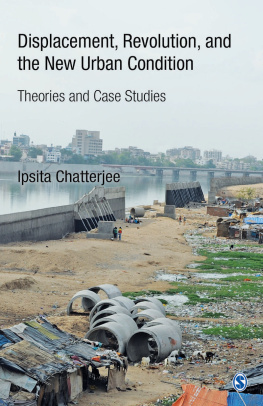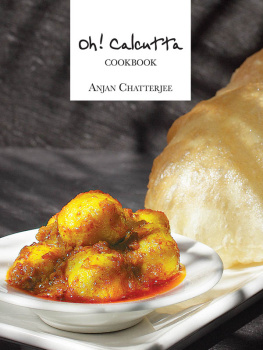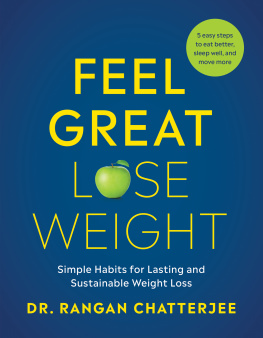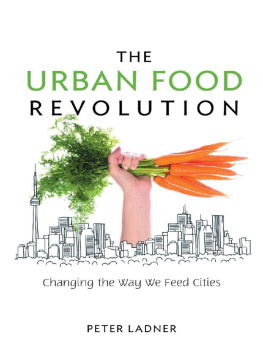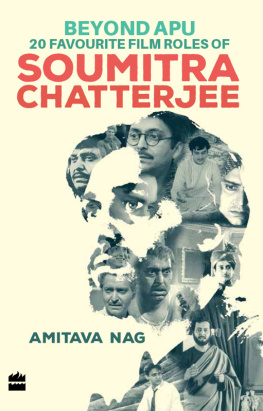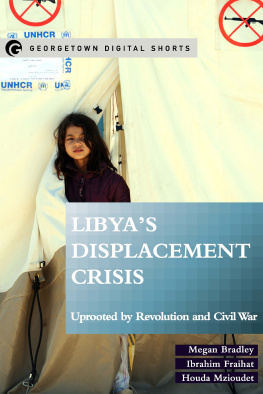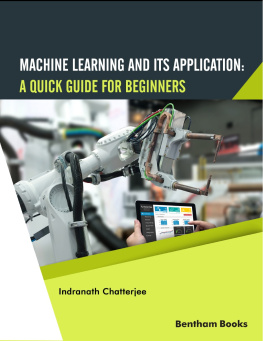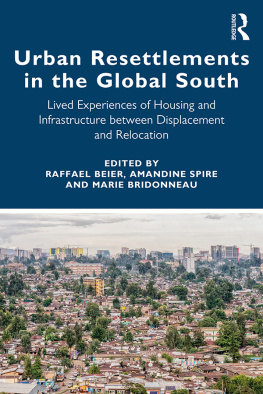Chatterjee - Displacement, Revolution, and the New Urban Condition
Here you can read online Chatterjee - Displacement, Revolution, and the New Urban Condition full text of the book (entire story) in english for free. Download pdf and epub, get meaning, cover and reviews about this ebook. year: 2015, publisher: Sage Publications India Pvt, Ltd -- eBooks, genre: Politics. Description of the work, (preface) as well as reviews are available. Best literature library LitArk.com created for fans of good reading and offers a wide selection of genres:
Romance novel
Science fiction
Adventure
Detective
Science
History
Home and family
Prose
Art
Politics
Computer
Non-fiction
Religion
Business
Children
Humor
Choose a favorite category and find really read worthwhile books. Enjoy immersion in the world of imagination, feel the emotions of the characters or learn something new for yourself, make an fascinating discovery.
- Book:Displacement, Revolution, and the New Urban Condition
- Author:
- Publisher:Sage Publications India Pvt, Ltd -- eBooks
- Genre:
- Year:2015
- Rating:5 / 5
- Favourites:Add to favourites
- Your mark:
- 100
- 1
- 2
- 3
- 4
- 5
Displacement, Revolution, and the New Urban Condition: summary, description and annotation
We offer to read an annotation, description, summary or preface (depends on what the author of the book "Displacement, Revolution, and the New Urban Condition" wrote himself). If you haven't found the necessary information about the book — write in the comments, we will try to find it.
Chatterjee: author's other books
Who wrote Displacement, Revolution, and the New Urban Condition? Find out the surname, the name of the author of the book and a list of all author's works by series.
Displacement, Revolution, and the New Urban Condition — read online for free the complete book (whole text) full work
Below is the text of the book, divided by pages. System saving the place of the last page read, allows you to conveniently read the book "Displacement, Revolution, and the New Urban Condition" online for free, without having to search again every time where you left off. Put a bookmark, and you can go to the page where you finished reading at any time.
Font size:
Interval:
Bookmark:

Displacement, Revolution,
and the New Urban Condition
Displacement,
Revolution, and the
New Urban Condition
Theories and Case Studies
Ipsita Chatterjee

Copyright Ipsita Chatterjee, 2014
All rights reserved. No part of this book may be reproduced or utilized in any form or by any means, electronic or mechanical, including photocopying, recording or by any information storage or retrieval system, without permission in writing from the publisher.
First published in 2014 by

Sage Publications India Pvt Ltd
B1/I-1 Mohan Cooperative Industrial Area
Mathura Road, New Delhi 110 044, India
www.sagepub.in
Sage Publications Inc
2455 Teller Road
Thousand Oaks, California 91320, USA
Sage Publications Ltd
1 Olivers Yard, 55 City Road
London EC1Y 1SP, United Kingdom
Sage Publications Asia-Pacific Pte Ltd
3 Church Street
#10-04 Samsung Hub
Singapore 049483
Published by Vivek Mehra for SAGE Publications India Pvt Ltd, typeset in 10.5/12.5 Adobe Garamond Pro by RECTO Graphics, Delhi and printed at Saurabh Printers Pvt Ltd, New Delhi.
Library of Congress Cataloging-in-Publication Data
Chatterjee, Ipsita.
Displacement, revolution, and the new urban condition : theories and case studies / Ipsita Chatterjee.
pages cm
Includes bibliographical references and index.
1. Forced migrationSocial aspectsDeveloping countries. 2. UrbanizationDeveloping countriesSocial aspects. 3. Economic development projectsDeveloping countries. I. Title.
HB1951.C43 307.2dc23 2014 2014001964
eISBN: 9789351504207
The SAGE Team: Shambhu Sahu, Vandana Gupta, Rajib Chatterjee and Rajinder Kaur
Cover image by Dr Waquar Ahmed
For Waquar
Thank you for choosing a SAGE product! If you have any comment, observation or feedback, I would like to personally hear from you. Please write to me at
Vivek Mehra, Managing Director and CEO,
SAGE Publications India Pvt. Ltd, New Delhi
Bulk Sales
SAGE India offers special discounts for purchase of books in bulk. We also make available special imprints and excerpts from our books on demand.
For orders and enquiries, write to us at
Marketing Department
SAGE Publications India Pvt. Ltd
B1/I-1, Mohan Cooperative Industrial Area
Mathura Road, Post Bag 7
New Delhi 110044, India
E-mail us at
Get to know more about SAGE, be invited to SAGE events, get on our mailing list. Write today to
This book is also available as an e-book.

For Our Readers
Contents
Makeshift Stage Celebrating Ratha Yatra (Chariot Procession in Honor of Hindu Gods) in the Courtyard of the AMC, Ahmedabad, India
Saffron Arches with Pictures of Government Officials Constructed as a Part of the Celebration of Ratha Yatra (Chariot Procession in Honor of Hindu Gods) All over the City of Ahmedabad, India
Elephants Rented by the AMC Stand in Readiness for the Impending Chariot Procession
The Concept Plan
SRFD Project in 2006, with the Poor Still Inhabiting the Banks in Flimsy Huts Seen in the Distance
SRFD Project in 2010
The Enterprising SlumSlum-dwellers Using the River to Serve the City with Informal Laundry Facilities
Inhabitants of the River, Khanpur Basti (Slum) along the River Sabarmati, Photograph Taken from a Bridge, 2010
A Muslim Home in Khanpur Made of Discarded Wood and Rope, 2010
Khanpur Basti (Slum) along the River Sabarmati; Snaking Lanes Barely Wide Enough for One Person Serve as a Sewage Disposal Artery as well, 2010
The City and the Slum Blend into One Another
Sabarmati Nagrik Adhikar Manch Business Card Displaying the Hindu Om, Muslim Star and Crescent, and Christian Cross phasize the Need for Intercommunity Cooperation in the Sabarmati River Front Resistance Movement
Original Concept Plan Showing Rehabilitation Housing for Slum-dwellers Was Supposed to be Constructed in Close Proximity to the Slums along the River Banks
Over a Thousand Homes Have Been Removed and Constructions Are Underway, 2010
Vivekananda Mill Resettlement Site Is CompleteMuslim Families Who Went to Take a Look at Their Prospective Homes Were Chased Away
Wadaj Resettlement Site, Where a Few Muslim Families Find Themselves Uncomfortably Placed among a Majority Hindu Population
Ajit Mill Complex Has Been Resettled and Here Hindus Find Themselves in the Minority
T his book was made possible because of the cooperation and support of the poor and courageous people on the banks of the Sabarmati River who write this book every day in the day-to-day context of their everyday life. The reality of their existence, their constant struggle, and resilience inspires meI want to acknowledge that I have merely attempted to conceptualize the concreteness of struggling peoples everyday life, they do the hard work of living it and altering it. I am grateful to the South Asia Institute, University of Texas at Austin, for supporting me financially for my 2010 field trip to Ahmedabad. I am infinitely grateful to Paul Adams for walking me through the labors of book proposal writing and advising me in his own quiet way on life and work. Dick Peets constant encouragement and loving presence egged me on when the going became tough. When I felt that I could not do it any longerthe material and conceptual struggles are too hard and it would be easy to give up, Dicks encouragement and faith in me kept me going. I am grateful to my parents who tolerated me and supported me even when they were not quite sure what I was up to in hundred degrees heat in AhmedabadMa and Baba in their own little ways have always stressed the importance of deep understanding, analysis, and respect for the difficult realities that surround us. Waquars ability to tolerate me baffles me, especially during this book-writing project when I was also balancing motherhood for the first time, and was not dealing with either of the tasks very wellno other person could have supported me the way he did. Waquar is an intellectual inspiration, a kind and generous human being, and a fantastic father. Little Nadia was six weeks old when I started writing this book, now she is two years old, in many ways, this book and Nadia are my two little ones who grew each day, I learnt so much from the book writing process and the motherhood process, I will never be the same again. I am also grateful to the Department of Geography, University of North Texas for graciously offering me a position that allowed me to intellectually and personally transit to a better place as I completed this book.
T his book attempts to conceptualize the contemporary urban condition. I wanted to stress the importance of conceptualization, because it is a very hard thing to do, but it is the most important thing that a human being can do after eating. This may sound outrageous, but allow me to explain, eating is important for survival, it involves the complex act of putting food into the mouth, chewing it, and then digestion, which involves multiple acts of intestinal juices breaking up the food and converting it to energy. Conceptualization is the intellectual act of digestion, it involves the complex act of observing, feeling, touching, smelling, understanding, and recording the reality in which one is imbricated, and then synthesizing the heterogeneous, disjointed, scattered perceptions into a coherent theory that will allow someone else situated and imbricated in a different reality to understand and explain his/her world. Conceptualization allows us to build connections so that we can understand, explain, and ameliorate difficult realities with which we may not be immediately connected. Conceptualization is, therefore, an intensely political act, it is also very democraticit enables us to be empathetic toward other peoples realities, it allows us to explain those realities, share those realities, and participate in overhauling the oppressiveness of those realities. Without conceptualization there would be no democratic politics, because we would be stuck in our individual realities unable to share, act, and be agents of change for a more global context than the specificity of our very own lives. Conceptualization, therefore, forms the body politic of the global digestive process.
Font size:
Interval:
Bookmark:
Similar books «Displacement, Revolution, and the New Urban Condition»
Look at similar books to Displacement, Revolution, and the New Urban Condition. We have selected literature similar in name and meaning in the hope of providing readers with more options to find new, interesting, not yet read works.
Discussion, reviews of the book Displacement, Revolution, and the New Urban Condition and just readers' own opinions. Leave your comments, write what you think about the work, its meaning or the main characters. Specify what exactly you liked and what you didn't like, and why you think so.

